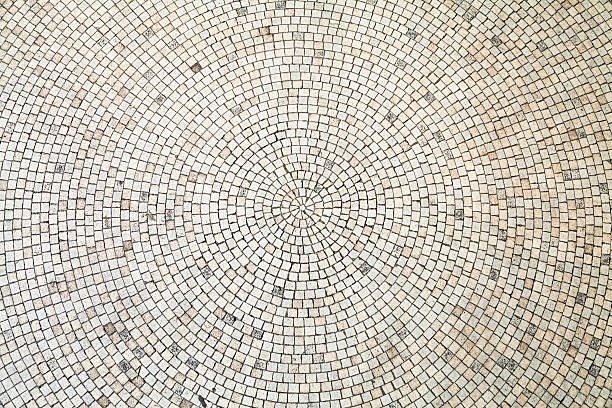Mosaic tiles are not ready-made tiles; but a layer of small pieces of differently colored stones, metals, and glass to create different patterns and designs on walls or floors by mounting these on a 1’x1′ size net or sheet. The method of installing mosaic tiles is similar to that of other tiles made from ceramic, porcelain, glass, and stone. The size of the area for installation and the complexity of the chosen patterns determine the time it takes to complete the installation.
Assuming that you have the required materials and tools, here are the steps to follow to complete the installation of mosaic tiles on a wall.
Surface Preparation
Choose the largest area of the wall as the starting point for installing the first tile. If you are installing tiles in the kitchen, the area between the vent hood and the range is usually the largest. Mark the center point of the wall to maintain symmetry and balance. Draw a line that is the place to start the installation. Clean the surface to remove grease and splatters and mask off the upper cabinets and countertops adjacent to the titling area.
Apply the adhesive
For a new drywall, apply a layer of skim coat and allow it to dry to level the surface. For a smooth surface, rub it with coarse-grit sandpaper to slightly rough the surface for better griping of tiles. To even out a wavy surface, spread a layer of joint compound (setting-type) to make the surface even. If the application area is wet, a thin-mortar set is the best adhesive, or mastic works well for dry surface and vertical installation. After mixing the thin-set mortar following the manufacturer’s instructions, apply the mixture to the wall along the center line with a notched trowel while creating ridges of equal thickness. Spread the adhesive over a small area at a time, as it dries very quickly.
Cutting the tiles
Cut the tiles appropriately to fit around the power sockets and fill the gaps with cut pieces of tiles. Depending on the nature of the tiles and their hardness, you have to use either a wet saw or a manual tile cutter. After cutting the tiles, make the edges smooth by rubbing sandpaper so that the tiles seat perfectly beside one another to give a better look after finishing the installation.
Tile installation
Since you have already gone through the dry laying process, the tile installation process is a repetition of what you did before. The center line is the starting point for tile installation but starts from the bottom point and gradually moves upward, placing one tile beside the next. To maintain uniformity, place the tiles firmly by using a straight edge to push the tiles slightly to maintain the same level of each row. After completing the placement of tiles in one row, start working on the next row adjacent to it. As the installation progresses, occasionally tap on the previously installed tiles to ensure that tiles have bonded fully with the thin-mortar set.
Grouting
After completing the tile installation, wait for 24 hours before sealing the grout joints. Prepare the grout paste by mixing the powder with water and applying it to the joints with a grout float. Move the float diagonally across the tiles while holding it at an angle of 45 degrees. Remove any excess grout by scraping it with the float. After 20-30 minutes of application, wipe off the grout from the tile surface by using a wet sponge.
With the help of a utility knife, remove the grout from the joints along the bottom, and the inside corners. Finally, wipe the tile surface with a piece of microfiber cloth after two hours.
After a week, apply grout sealer on the grout joints that signals the completion of mosaic tiles installation.

